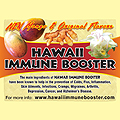Hawaii’s Recent Lava Flows
The Big Island’s – Recent Southern Lava Flows
The Big Island is alive and still growing, geologically speaking. The Pahoa area has seen some amazing flow activity last year, with sadly the loss of over 600 homes and some parts of the scenic coastline. Kilauea has been erupting since 1983, but the 2018 flow was different. The volcano essentially recreated the land. These new and exciting flows are from vents in and around Kilauea, known as the sworld’s most active volcano. Kilauea also created over seven square miles of new land along the southern coast. With flow activity changing, you never know what to expect on your visit here.
Along with the lava activity last year, there was a major eruption in the wall of the Halema’uma’u Crater at the summit of Kilauea Crater. This threatened the Jagger Observatory foundation, located near the Crater rim. This was the first major eruption since 1924 when a continual plume of gas, ash, steam and smoke rose a mile above the crater as lava churned in the bottom. Subsequently, Hawaii Volcanoes National Park closed.
Now it is open, a must-see for visitors. From fresh lava flows, to barren fields, to thick, earthy, fern forests and lava tubes, the Park is a unique geological wonderland. The rim of the Kilauea Summit Caldera overlooks the lower, active Halema’uma’u crater, observable from some look-out points.
More recent eruptions resulted in closures of some parts of the Park, due to geological instability and the haze of sulfur dioxide gases. The increase in gases is responsible for the overcast sky, called “volcanic smog” or “vog,” which blows west towards Kona during normal tradewind weather patterns.
Outside the Park, the lava flow formed new fissures in the east rift zone. These lava rivers flow into the sea just four miles from the village of Kalapana, already partly destroyed by lava in 1990. A new gravel road, at the end of Highway 130, is open for vantage points of these flows.
To physically get to the recent flows, it’s an eight-mile round trip via hiking or biking. If you go at night (for the best viewing), make sure to bring flashlights, water, and appropriate clothes for the temperature drop. The gravel hiking/biking road ends about 100 yards from the flow. Follow the rope trail to the left to view the current ocean lava entry from a distant vantage point. These active flows shift like rivers and are potentially dangerous. Therefore, guided tours of the area are recommended for your own safety.
An alternative to the long land trip is onboard a fast and comfortable boat. Once you arrive at the flow area, you’ll feel the heat of the eruption and see the magnificent lava as it streams into the ocean. It’s a fantastic, dreamlike experience.
For some truly mind-blowing, lava photo prints check out Lava Light Galleries located on Alii Dr. in Kona and at Queens Market Place, Waikoloa. Phone: (808) 756-0778.
The Volcano Art Center, in Volcano Village offers Free Forest Tours Monday mornings at 9:30 am. You’ll learn about the Hawaiian rain forests, the last old-growth koa and ’ōhi’a rain forests, and the botanical uses of Hawaiian flora. The hour-long walk takes place rain or shine along an easy, level gravel trail. Be prepared for rain in the rain forest. Donations are appreciated. They help the rain forest restoration and education efforts.
Custom Rain Forest Tours are also available for a small fee. Call (808) 967-8222








